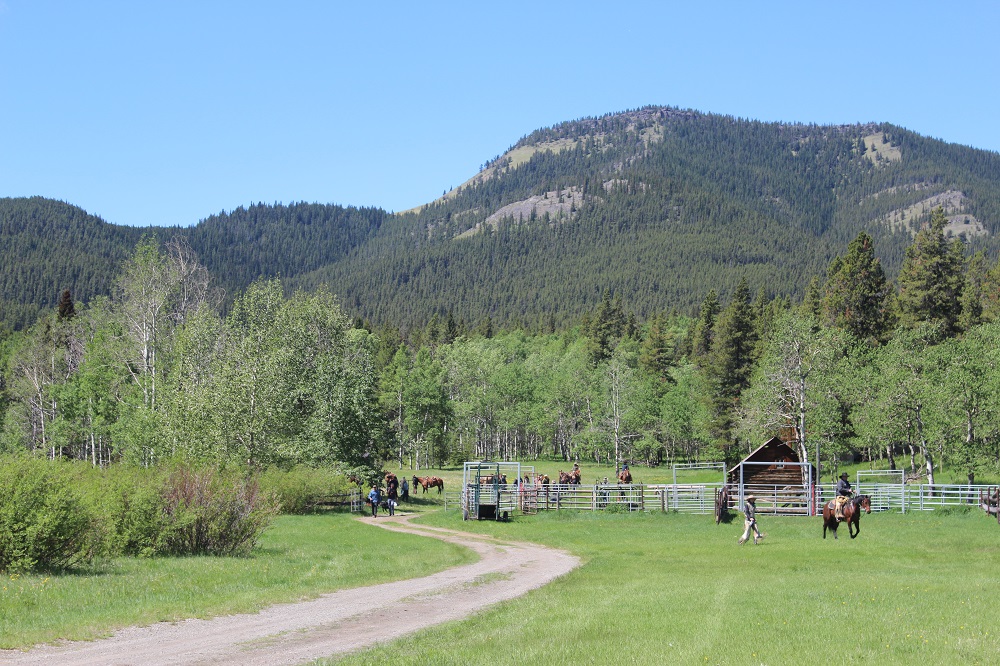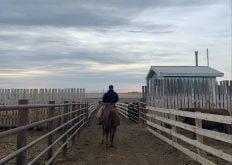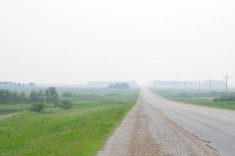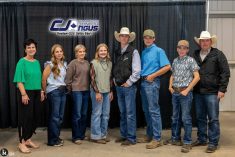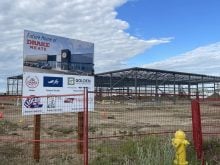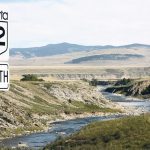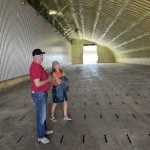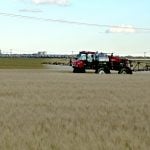The Blades family of Nanton, Alta. has been linked to Cabin Ridge Mountain for a century.
Named for the family’s original cabin, the mountain overlooks summer grazing land vital to the Rocking P Ranch. It’s remained constant as generations fostered a deep love and sense of responsibility for this landscape, and endured the hardships and joys that ranching inevitably brings.
A year after learning about the Cabin Ridge mining project, an open-pit metallurgical coal mine, Mac and Renie Blades and their family continue to fight against it and other proposed open-pit mines in the Eastern Slopes of the Rocky Mountains.
Read Also
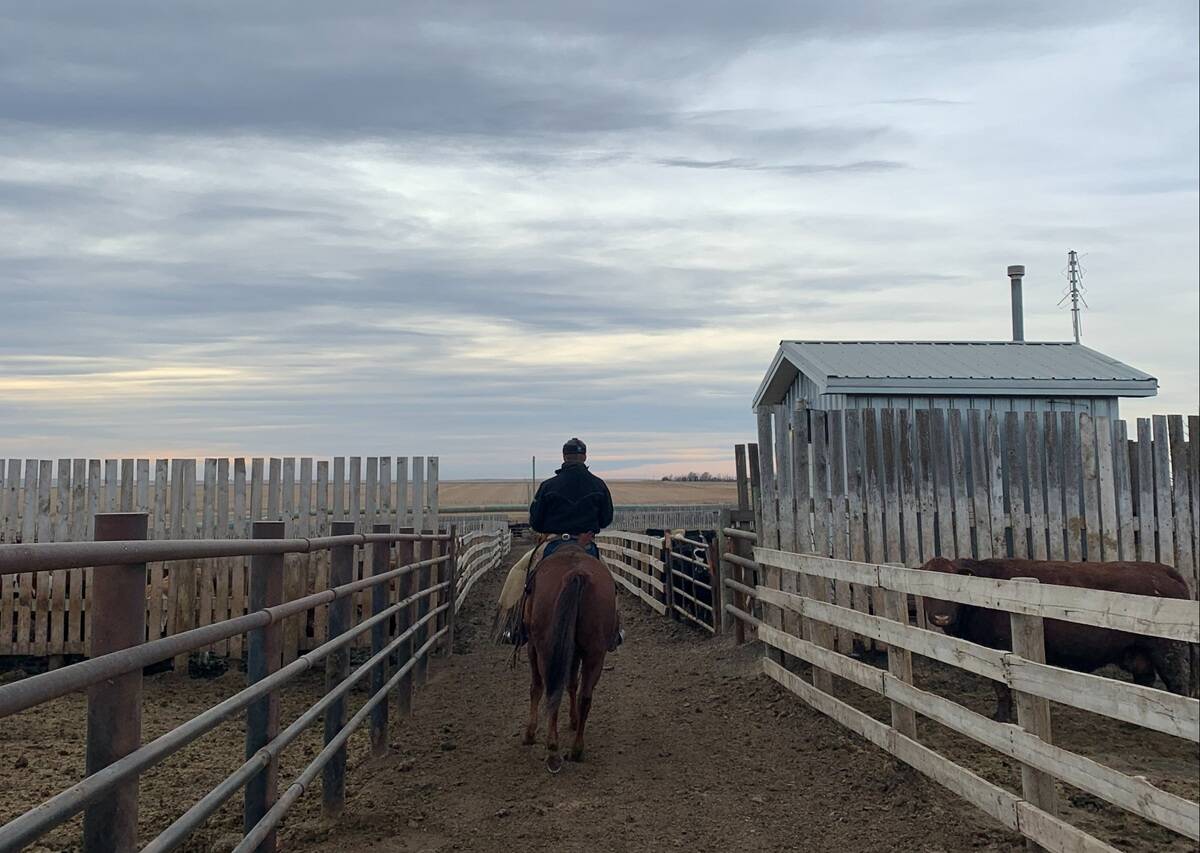
Pen riders still better than tech at detecting respiratory disease in feedlot cattle, says researcher
Recent research found that pen riders are better than tech at flagging signs of BRD in feedlot cattle
“It’s just unbelievable that they could think of making a coal mine back there and removing this mountain,” says Mac Blades, speaking at a media event at the Rocking P Cabin last week.
The Blades family and other ranchers affected by the proposed mines gathered below Cabin Ridge Mountain to share the beauty of the Mt. Livingstone Range and provide a glimpse of what is at stake, not just for their families but for all Albertans.
“This is one of the biggest issues our generation’s ever going to face, and I think that we saw that very clearly in the diversity and extent of the public outcry,” says Rachel Herbert of Trail’s End Beef at Nanton, Alta.
“We saw people from every sector, every walk of life. People are understanding the scope and the extent and the magnitude of the repercussions if we mess in our headwaters here.”
Renie Blades says it’s “monumentally important” to them that their family has been able to ranch near Cabin Ridge. “If the coal mines wipe out our summer grass, it will make a difference to our ranch, so it touches us personally with our business, but more than that, we are so connected to this environment and this land. You can’t spend time here and not love this country.”
This sentiment was echoed by the youngest generation on the Rocking P Ranch. “It’s our history; we really want it to be our future,” says Reata Schlosser, Mac and Renie’s granddaughter, who shared childhood memories of playing at nearby Macleay Creek, named for her great-great grandfather.
“This history of our family being on this land and what it’s given us and the life it’s given me and the work ethic it has taught me can never be replaced.”

Just a day after the event, the Alberta Energy Regulator (AER) announced its review panel denied Benga Mining Limited’s provincial application for another controversial proposed mine, the Grassy Mountain Coal Project near Blairmore. The AER cited the likely “significant adverse environmental effects surface water quality, westslope cutthroat trout and their habitat, whitebark pine, rough fescue grasslands, and vegetation species and community biodiversity” resulting from this project as part of its decision.
Though critics of open-pit coal mining in Alberta are celebrating the AER’s decision, several other contentious mines, including the Cabin Ridge project, are still moving ahead in the approval process.
Report finds long-term impacts to water
To build the proposed mines, almost six billion cubic metres of coal overburden has to be removed to access the coal seam, says Brad Stelfox, landscape ecologist with the Alces Group, a consulting firm that studies land use and resource issues. This would mean disturbing an area of approximately 700 square kilometres in total.
Stelfox was the lead author of a report on the potential impact of coal mining at the headwaters of the Oldman River watershed. Commissioned by the Livingstone Landowners Group, the research simulated the eight proposed coal mines and predicted the effects over five decades.
“We’ve got the certainty of water quality and water quantity, biodiversity, and some extensive land use practices like cattle grazing that can maintain that natural capital,” he says. “I think what we’re being asked to do is trade that off for short-term gain.”
In addition to potential negative impacts on downstream water quality and quantity, the report anticipates consequences for smaller creeks and riparian areas around the proposed mine sites, with the mines predicted to use up to 40 per cent of all the water in these areas.
Based on the Teck Resources mines in B.C.’s Elk Valley, the report predicts that only one-quarter of the proposed Alberta mines would be reclaimed in 50 years. Reclamation wouldn’t return the land to its original appearance. Its function as the headwaters of major watersheds would also be altered.
Stelfox says that while mining companies such as Teck Resources are working hard to develop technologies to remove selenium from contaminated bodies of water, “I don’t think they’ve been well tested through what I’d call meaningful space and time, over many generations and in very wet years and very dry years.”
“The coal sector would argue that they think they’ve solved this problem, and perhaps they’ve made some inroads, but they’re asking everyone to accept at face value that they can remove selenium…and that’s a tremendous risk.”
Ranchers who depend on grazing land in the proposed mine areas aren’t willing to take those risks. Laura Laing of Plateau Cattle Company at Nanton, whose Mount Livingstone grazing allotment neighbours that of the Rocking P Ranch, stresses the need for the decision makers to see this landscape for themselves.
“We’ve heard them say it’s not happening in pristine landscapes. We’ve heard them say this is not happening in major watersheds, and we’d like to say that’s false,” she says.
“It feels like the tide’s turning a little bit”
A year after the provincial government rescinded the 1976 Coal Policy, allowing these mines to move through the approval process, these ranchers are encouraged by the response from Albertans after the struggle to bring this issue to the public’s attention.
“We feel like we’ve made significant progress if we think about where we started last year, where this was happening without any public knowledge,” says Laing, who along with her husband John Smith and the Blades family, are challenging the province in court over the rescinding of the original Coal Policy without consultation.
Due to the province’s backpedaling on coal over the winter, Herbert finds that many Albertans don’t realize these mines are still on track towards approval.
“I also think that the government’s deflection tactics were fairly effective. A lot of people said, ‘oh, I thought that was all wrapped up, I thought the exploration was paused and it was all back and protected again.’ We’re still a long way from any type of meaningful protections,” she says.
The morning of the event, Federal Environment Minister Jonathan Wilkinson announced the federal government will now conduct environmental reviews of any new proposed coal projects, no matter the size, with the potential to result in selenium contamination. This includes the proposed metallurgical coal projects in the Eastern Slopes. Wilkinson said that the effect of selenium on fish and their habitat brings this issue under federal jurisdiction.
“It feels like the tide’s turning a little bit, which is good because it’s been a battle, so if it makes it harder and more stringent for the mines to get started because of increased attention to contamination of water, that’s a great thing,” says singer-songwriter Corb Lund, whose criticism of the province’s actions regarding coal mining helped bring this issue to the attention of Albertans.
“A year ago, this was overwhelming, and we just felt at a loss,” says Renie Blades. “The federal government being involved, for now it’s good news, and the coal panel is doing a good job. They’re trying to meet with people and get good public reaction and reporting back. We just feel like it’s kind of developing in the right direction, and we’re hopeful. We’re hopeful we can save this beautiful country.”

The families behind Plateau Cattle Company and Trail’s End Beef at the Rocking P Cabin. Photo: Piper Whelan 
Songwriter and cowboy Malcolm Maclean performs. Photo: Piper Whelan 
Singer-songwriter Corb Lund performs at media event at the Rocking P Cabin. Photo: Glean Productions 
Macleay Creek, named for Mac Blades’ grandfather. Photo: Piper Whelan 
Mac and Renie Blades of the Rocking P Ranch. Photo: Piper Whelan 
Cabin Ridge Mountain. Photo: Piper Whelan 
The Blades family, supporters and guests at the Rocking P Ranch Cabin. Photo: Piper Whelan


